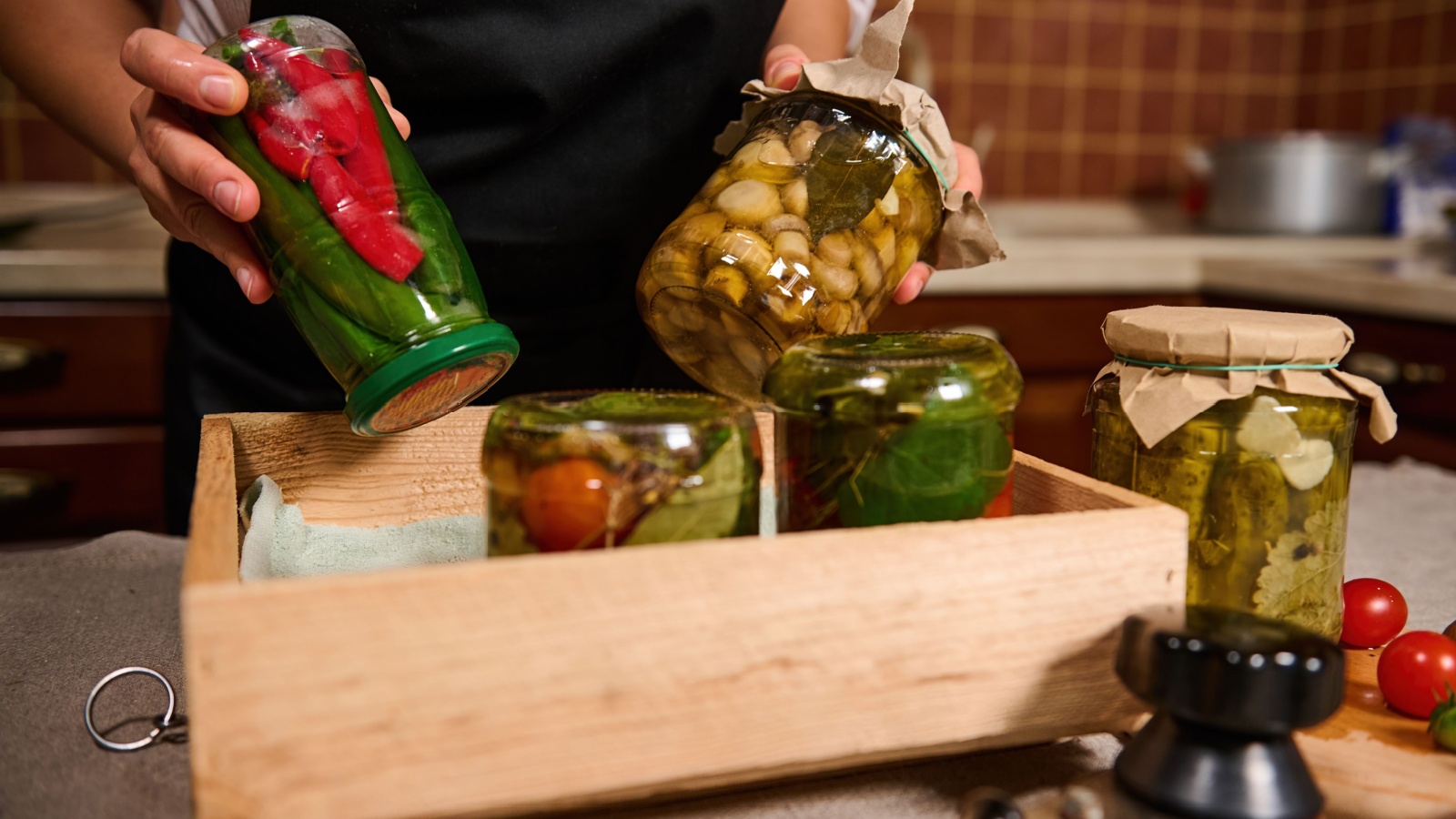For many Canadians, the idea of thriving without a six-figure income feels impossible in today’s economy. Yet across the country, households are finding creative, practical, and inspiring ways to live well on modest incomes. Here are 25 Canadian households proving you don’t need six figures to thrive:
The Vancouver Couple Renting Smart

In one of Canada’s priciest cities, this couple thrives on a combined income of $85,000 by renting a basement suite instead of stretching for a mortgage, biking instead of owning cars, and cooking most meals at home. They prioritize lifestyle over space, choosing a central location close to work and amenities. With no car payments or credit card debt, they save thousands each year for travel. By focusing on quality experiences and keeping housing costs under 30% of income, they prove that even Vancouver can be livable without six figures.
The Calgary Family Embracing DIY

A Calgary household with three kids thrives on under $90,000 thanks to serious DIY skills. From home repairs to gardening, they’ve cut thousands in costs by handling projects themselves, and they also avoid unnecessary upgrades, buy second-hand when it makes sense, and keep entertainment simple with family game nights and outdoor adventures. Their biggest win is from cooking meals at home, saving hundreds monthly compared to dining out. With a focus on self-reliance and creativity, they manage to live comfortably while still paying down debt and putting aside money for their children’s education.
The Halifax Roommate Collective

In Halifax, four friends in their late twenties share a large rented house, each paying just $700 a month. Their combined incomes average $50,000-$60,000 each, but pooling resources allows them to save aggressively toward future goals. They split groceries, cook shared meals, and use bulk shopping to cut expenses. By relying on public transit and bikes instead of cars, they’ve eliminated major costs while enjoying a lively, social living arrangement. Together, they’ve proven that collaboration and community can make financial stability much easier without needing massive paychecks.
The Winnipeg Seniors on a Pension

This retired couple lives on a combined pension income of around $48,000, and they’re thriving. With their mortgage fully paid off, housing costs are minimal. They keep expenses low by shopping at local farmers’ markets, traveling during off-peak times, and prioritizing community activities like free concerts and volunteering. By avoiding debt and focusing on meaningful daily experiences, they’ve built a retirement that feels full and rewarding, showing that happiness in later years doesn’t require a six-figure income.
The Toronto Single Mom Budgeting Wisely

Raising two kids in Toronto on $75,000 isn’t easy, but this single mom has mastered budgeting. She takes advantage of childcare subsidies, meal preps weekly to avoid costly takeout, and leverages the Toronto Public Library for free activities. Her biggest financial strength is avoiding lifestyle inflation and keeping savings automated. She doesn’t overspend on clothing or tech, and instead chooses practical purchases that last. With a clear plan and financial discipline, she’s been able to build an emergency fund, enjoy occasional family outings, and keep debt under control.
The Victoria Couple Focused on Minimalism

This Victoria couple lives happily on $70,000 a year by embracing minimalism. They rent a small but bright apartment near downtown, forgo car ownership in favor of walking and cycling, and limit purchases to only what they truly need. Their vacations are modest camping trips across Vancouver Island, and their social lives revolve around community events and dinners at home with friends. By rejecting consumer pressures and focusing on quality over quantity, they’ve managed to build a low-stress lifestyle that feels both sustainable and deeply fulfilling without excess income.
The Edmonton Tradesman and Teacher Duo

With a combined household income of $88,000, this Edmonton couple thrives by balancing practicality and planning. They keep their mortgage manageable by choosing a modest home in a family-friendly neighborhood, and they prioritize savings through automatic contributions to RRSPs and TFSAs, while keeping discretionary spending in check. Instead of luxury cars, they drive reliable used vehicles and handle routine maintenance themselves. By blending steady income with financial discipline, they’re building wealth while enjoying a balanced, affordable lifestyle.
The Moncton Family Growing Their Food

On a household income of $72,000, this Moncton family thrives thanks to a large backyard garden. They grow vegetables, keep backyard chickens, and swap produce with neighbors, and as a result, their grocery bills are slashed by nearly 40%, freeing up money for family outings and savings. They also embrace a frugal lifestyle, shopping second-hand and doing most repairs themselves. Community-focused and resourceful, they’ve built a lifestyle that not only saves money but feels healthier and more connected. For them, financial security comes not from a six-figure paycheck but from smart, sustainable living.
The Ottawa Tech Worker Sharing Costs

Living on $65,000 in Ottawa, this young professional saves big by sharing a townhouse with two roommates. His share of rent and utilities stays under $1,000, giving him room to pay off student loans and build investments aggressively. He avoids owning a car, relying on public transit and occasional ride-shares, and cooking meals in bulk, skipping expensive nights out, and focusing on free cultural activities around the city have helped stretch his budget further. While he doesn’t earn six figures, his disciplined choices are accelerating his financial independence.
The Hamilton Couple with a Paid-Off Mortgage

This Hamilton couple, both working modest jobs with a combined income of $80,000, thrives thanks to a mortgage-free home. After years of frugal living and aggressive payments, they now enjoy low monthly expenses. They drive a single older vehicle, share responsibilities for household costs, and prioritize savings for travel and hobbies. With no major debt and strong budgeting habits, they’re able to live comfortably without financial strain.
The Kelowna Family Cutting Extras

A family of four in Kelowna lives well on $78,000 by cutting non-essential expenses. They limit dining out, buy clothes on sale, and make heavy use of second-hand shops for children’s items. Their entertainment revolves around hiking, biking, and swimming in Okanagan Lake, which are activities that cost little but add immense value. They also run a small side hustle selling homemade preserves at local markets, bringing in a few extra thousand each year. By keeping their budget simple and avoiding debt, they thrive without ever feeling deprived.
The Montreal Artists Balancing Passion and Frugality

This Montreal couple makes a combined $60,000 as freelance artists but still thrives by keeping costs low. They live in a modest walk-up, take advantage of affordable public transit, and rely heavily on community arts programs for both work and inspiration. Their meals are cooked at home, often using bulk-bought staples. While their income is modest, they are debt-free and live intentionally, prioritizing creativity and meaningful experiences over material goods. Their financial stability comes not from high earnings but from balancing passion with frugality.
The Regina Couple Using Coupons and Cashbacks

On $68,000 a year, this Regina couple saves thousands through coupons, cashback apps, and loyalty programs. They carefully plan their meals, rarely buy at full price, and take advantage of sales to stock up. Instead of expensive vacations, they enjoy road trips across the Prairies. Their disciplined approach allows them to build an emergency fund and still enjoy small luxuries like dining out once a month. By making every dollar work harder, they thrive on less income while still meeting savings goals and enjoying a fulfilling lifestyle.
The St. John’s Fisherman’s Family

This Newfoundland household thrives on $74,000 through a mix of fishing income and seasonal work. They keep expenses low by living in a modest home, preserving seafood and produce for the winter, leaning on strong family and community ties for support. Instead of expensive entertainment, they enjoy local festivals, hiking, and community gatherings. Their ability to adapt to seasonal income fluctuations with careful budgeting ensures financial stability.
The Saskatoon Student Roommates

Four university students in Saskatoon share a rental house, collectively spending less than $2,000 monthly on rent and utilities. With part-time jobs and scholarships, their annual incomes hover around $20,000 each, and by pooling costs, cooking together, and sharing transportation, they manage to save money while still enjoying social lives. They prioritize studying and career-building, seeing their frugality as an investment in future success.
The Fredericton Family Living Debt-Free

This family of five thrives on $79,000 thanks to living completely debt-free. After paying off their small home, they adopted a strict budget that prioritizes needs over wants. They drive one vehicle, avoid financing purchases, and save for expenses in cash. Their kids participate in community sports and activities that fit within their budget, while family entertainment often revolves around low-cost outdoor fun.
The Whitehorse Couple Leveraging Nature

With a combined income of $70,000, this Whitehorse couple thrives by making nature their primary source of entertainment. Hiking, camping, and fishing replace costly vacations and outings. They heat their small home efficiently with wood, which keeps utility bills low, and they embrace a minimalist lifestyle to keep expenses manageable. They also supplement income with seasonal guiding work. Their financial success isn’t measured in luxuries but in the freedom to enjoy Yukon’s natural beauty without debt or stress.
The Quebec City Family Sharing Costs with Relatives

This Quebec City family shares a duplex with relatives, significantly lowering housing and utility costs. With a combined income of $77,000, they thrive by pooling childcare duties, bulk grocery shopping, and even meal preparation. This cooperative arrangement allows both families to save aggressively toward retirement and education funds, and their social lives and support networks are strengthened by living so closely together. By blending tradition with practicality, they’ve created a thriving lifestyle that proves you don’t need six figures when you share resources and responsibilities strategically.
The Thunder Bay Household with Side Hustles

This Thunder Bay couple earns about $65,000 from their main jobs but boosts income with side hustles, selling handmade crafts online, and doing seasonal yard work. They keep expenses low by living in a smaller home and driving older vehicles, and with extra earnings dedicated to paying down debt and saving, they stay financially secure. Entertainment is budget-friendly, often revolving around outdoor recreation and community events.
The Charlottetown Couple Prioritizing Community

On $69,000 a year, this Charlottetown couple thrives by prioritizing community over consumerism. Instead of spending on expensive gyms or entertainment, they join community sports leagues and attend local festivals. Their food budget is trimmed by buying from nearby farms and cooking at home, and they rent a modest apartment near work, avoiding car expenses. With low overhead and high social connection, they’ve built a lifestyle rich in relationships and experiences.
The Barrie Household Relying on Smart Tech

Living on $82,000 a year, this Barrie family thrives by using technology to save money. They use smart thermostats to cut energy bills, grocery apps to find the best deals, and budgeting tools to track every expense. Online thrift shopping and cashback programs add even more savings, and they prioritize quality family time at home over costly outings. With a balance of frugal habits and modern tools, they’ve created a financially stable household without needing a six-figure income and by using tech to stretch every dollar.
The Northern Ontario Couple with a Small Cabin

This couple lives comfortably on $58,000 by owning a modest off-grid cabin in Northern Ontario. Their expenses are minimal, with solar panels, a wood stove, and a simple well system. They hunt, fish, and grow much of their food while also working part-time remote jobs. They don’t travel often but embrace a peaceful, debt-free lifestyle surrounded by nature. Their thriving comes not from consumer luxuries but from freedom, self-sufficiency, and financial independence. By cutting out big expenses entirely, they’ve proven that even a modest income can support a fulfilling life.
The Kitchener Family Focusing on Education Over Stuff

On $83,000 a year, this Kitchener family prioritizes education over material possessions. Instead of spending on luxury goods, they direct money into RESP contributions, books, and learning experiences for their kids. Their vacations are often road trips to historical sites or science museums, blending affordability with enrichment. They avoid debt by driving a reliable older car and buying clothing second-hand, while long-term values, not short-term trends drive financial decisions.
The Lethbridge Couple Choosing One Car

This Lethbridge household thrives on $71,000 thanks to sharing a single vehicle. By carefully planning schedules and relying on biking and walking, they save thousands annually in fuel, insurance, and maintenance. They use the savings to fund travel, build investments, and pay off debt, and their modest home and no-frills lifestyle mean fewer financial pressures overall. Rather than striving for more income, they’ve built contentment by reducing costs where it matters most. Their example proves households can thrive not by earning six figures, but by intentionally limiting unnecessary expenses.
The Nunavut Family Balancing Tradition and Modern Life

On $76,000, this Nunavut family thrives by blending traditional skills with modern resources. They offset high food costs by hunting, fishing, and preserving food, while also making use of community sharing networks. Subsidies support their modest housing, and they focus discretionary spending on what matters most, which is family well-being and cultural traditions. Despite the challenges of remote living, they maintain financial stability through resourcefulness and prioritization.
21 Products Canadians Should Stockpile Before Tariffs Hit

If trade tensions escalate between Canada and the U.S., everyday essentials can suddenly disappear or skyrocket in price. Products like pantry basics and tech must-haves that depend on are deeply tied to cross-border supply chains and are likely to face various kinds of disruptions
21 Products Canadians Should Stockpile Before Tariffs Hit
